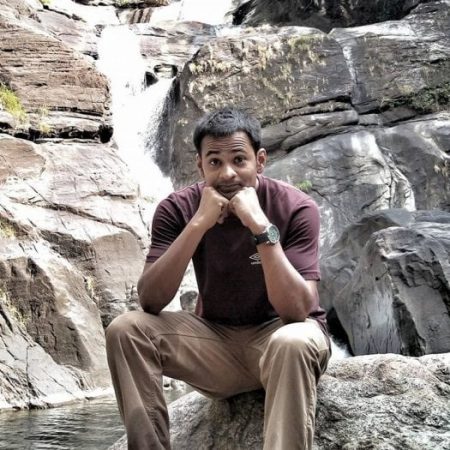
Welcome to the My Science Life feature of Ritabrata Dobe, Junior Research Fellow funded by the Council of Scientific and Industrial Research (CSIR) India.
I am pursuing a PhD on the broad lines of structural geology, metamorphic petrology, and geochemistry at the Indian Institute of Technology, Kharagpur. My research involves the synthesis of field observations and analytical conclusions made in the laboratory. Structural geology is a means of deciphering information stored over millions of years about how and why rocks were deformed over time. I collate information gathered from observations in the macroscopic scale during fieldwork, with observations of thin sections (30 micrometer thick slices of rock observable under the microscope). This helps me formulate ideas with regard to how a rock may have deformed over time.
Imagination is more important than knowledge – Albert Einstein

Ritabrata Dobe
A typical working day will start with me browsing a few relevant journals to check up new and interesting articles published in my fields of research. I have a number of thin sections from rocks I have collected during fieldwork, and they make for fascinating observation under the microscope, which usually follows the literature review. I use a number of analytical techniques such as Electron Backscatter Diffraction (EBSD) and Scanning Electron Microscopy (SEM) for microstructural analysis, and these would follow the session of microscopic observation.
I am investigating the nature and mode of deformation along the contact of 2 ancient terranes, the Rengali Province dated at 2.8 billion years and the Singhbhum Craton dated at 3.3-3.1 billion years. These 2 terranes have an arcuate contact in the state of Odisha in India. While there is a prominent difference in the nature of the rocks (lithology) and the degree of metamorphism and deformation in the 2 terranes, the nature of the contact between them is not well constrained. I am using a combination of field observations and microstructural observations to try and determine the type of contact between the terranes and its implications for the assembly of the Indian Craton as a whole.
One of the biggest challenges for a structural geologist is the rigorous fieldwork required in order to create an irrefutable idea about the structural complexities associated with any geological terrane. Finding outcrops is a major challenge and one needs to cover long distances on foot over difficult terrains in order to find outcrops worth studying. Accessibility is another issue since the region I work in has limited connectivity via roads.
If you like working in the great outdoors, if you seek adventure and have no qualms about the physical rigors associated with fieldwork, structural geology is the field for you. There is a great deal about the Earth that we do not know yet, bits which are waiting to be discovered, problems yet to be solved which await you, but only if you can brave a random downpour in the middle of nowhere occasionally.
The ‘My Science Life’ project is a core part of Science Trends’ mission to give a voice to scientists and allow them to connect with tens of thousands of people. It is an opportunity for people, like yourself, to share their “story” and in doing so, make science more approachable and personal.
Interested in being part of the My Science Life project? You can find the details about submission here.








